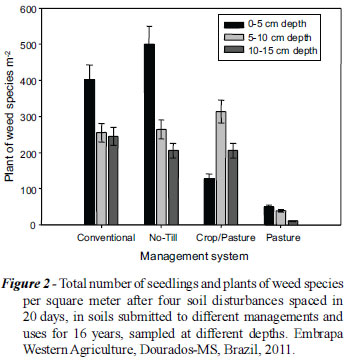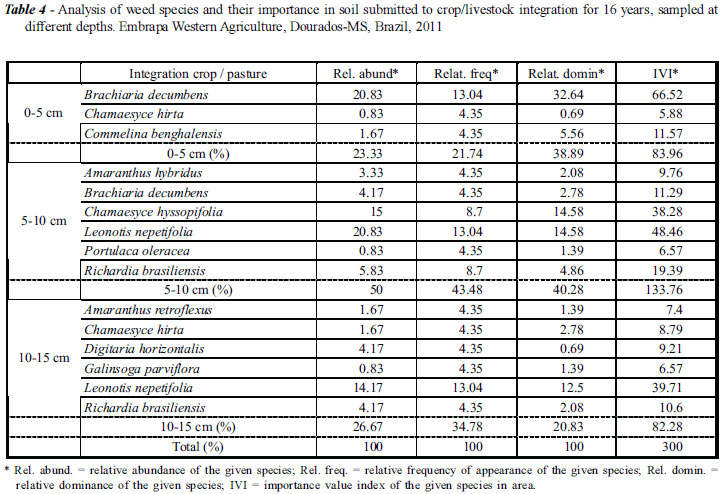This study aimed at assessing the level of weed infestation indifferent areas that were submitted to different soil management for 16 years. Four management systems were studied: (1) agriculture only under conventional tillage system; (2) agriculture only under no-till system; (3) crop-livestock integrationcrop-livestock integration; (4) livestock only. These areas were sampled at three soil depths (0-5, 5-10 and 10-15 cm), and soil was stored in plastic pots and taken to a greenhouse, where soil moisture and weight were standardized. Soil was kept near 70% moisture field capacity, being revolved every 20 days when all seedling emerged from soil were counted, identified and collected for dry mass assessment. The soil coverage by weeds, number of weed seedlings and dry mass of the weedy community were assessed. A phytoecological analysis was conducted. Weed composition is differentdifferent among management systems after 16 years. Areas with livestock showed much smaller number of weed species in comparison to systems where only grain crops are grown. The presence of livestock affects the potential of germination of soil seed bank. Agriculture systems are similar in terms of weed composition along soil profile, while systems involving livestock show little relation in what regards such sampled depths. Conservationist models of land exploration contribute to reduce severity of weed species occurrence in the long term.
weeds; cropping systems; crop-livestock integration









